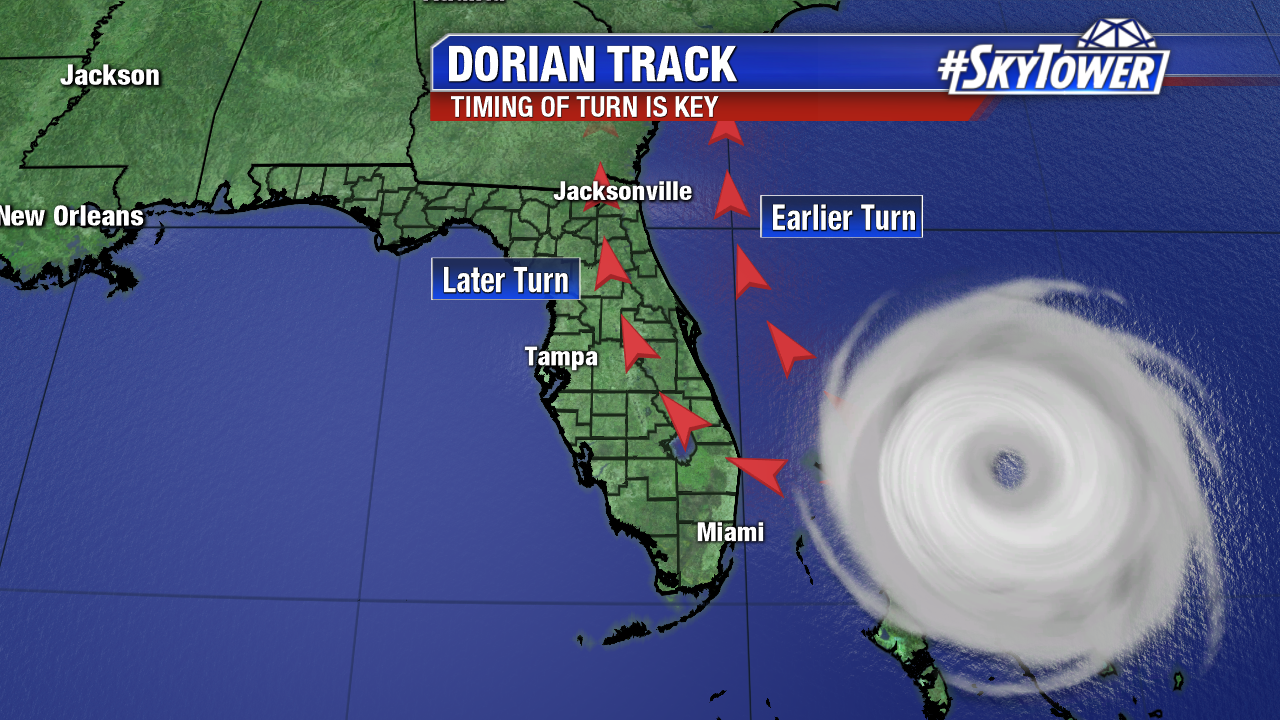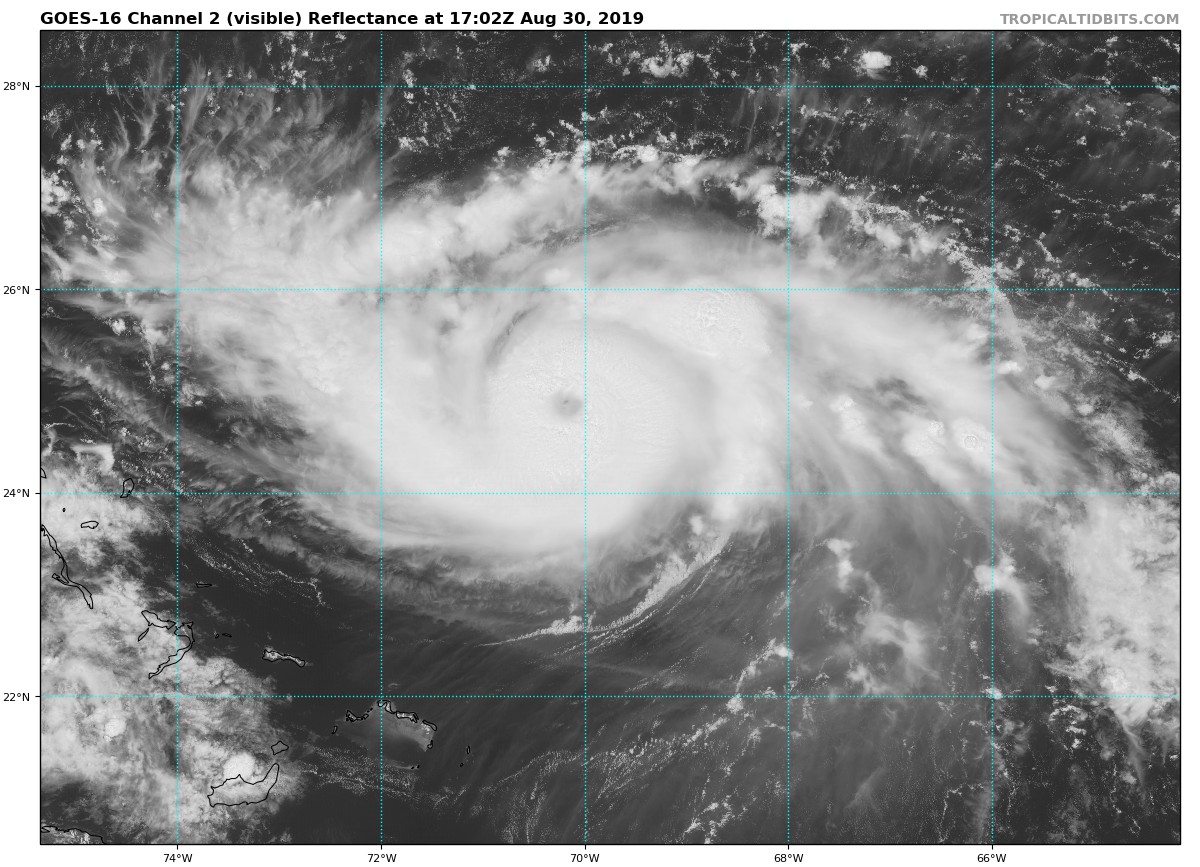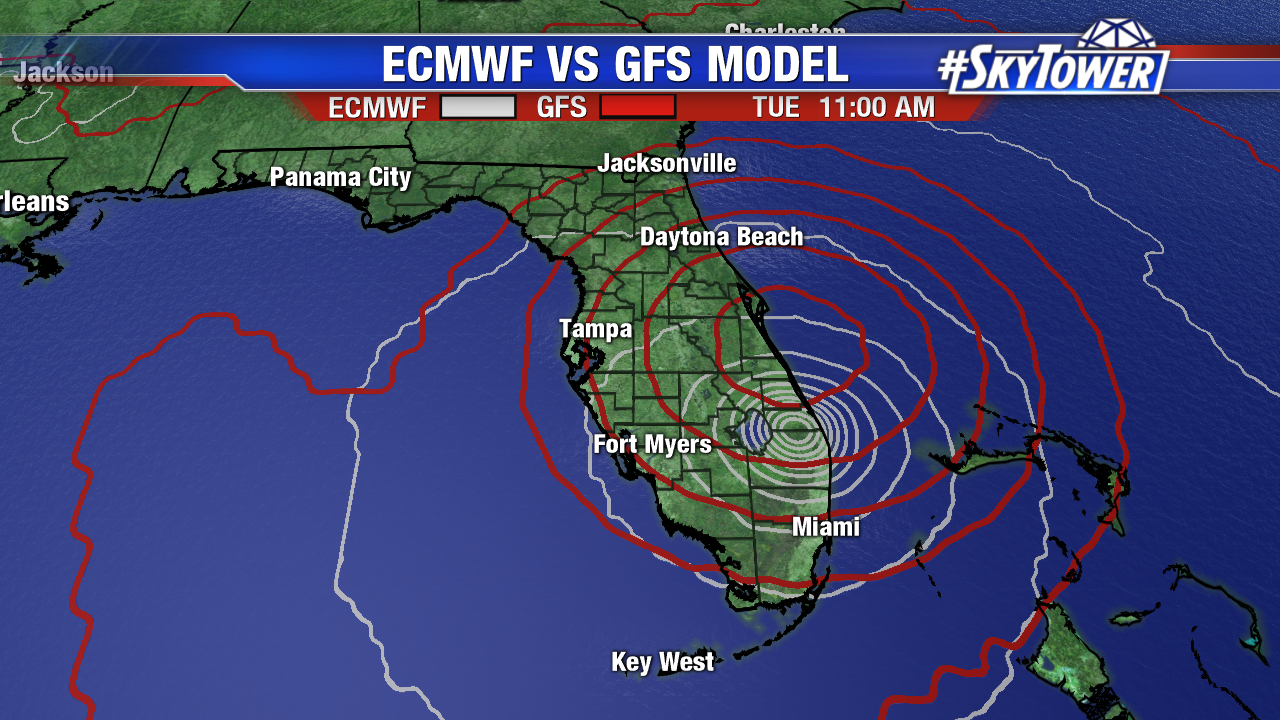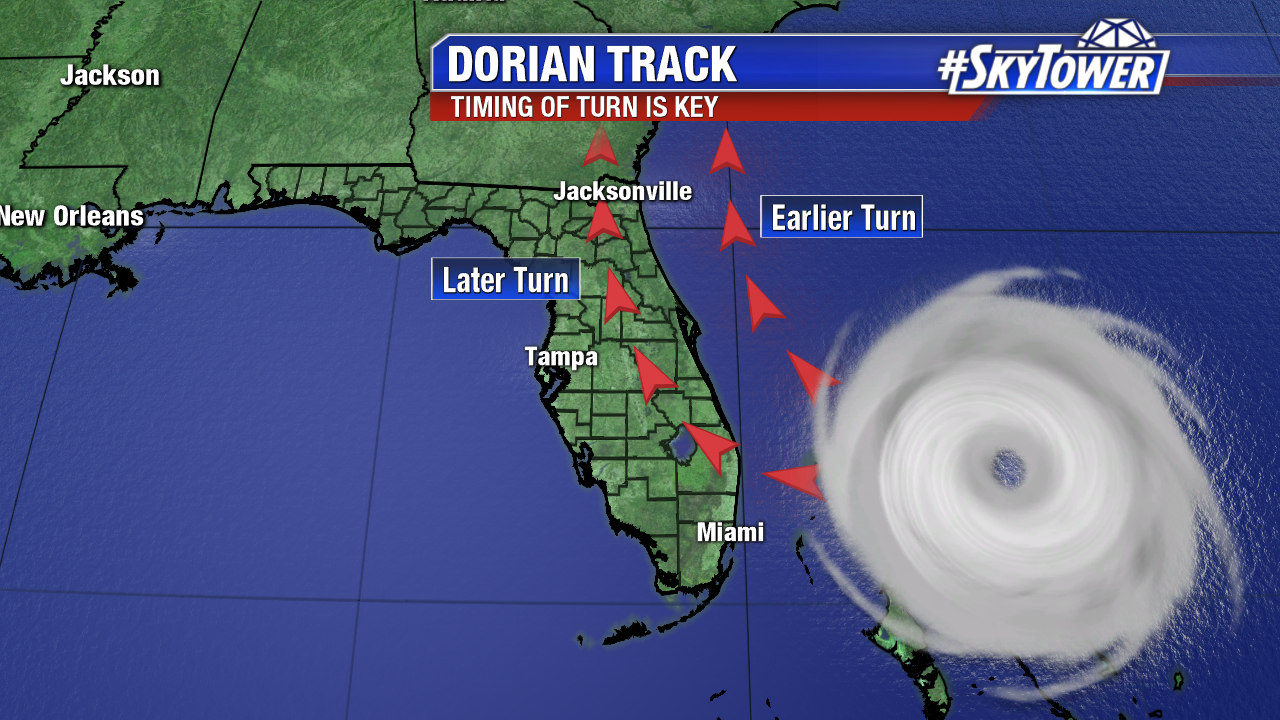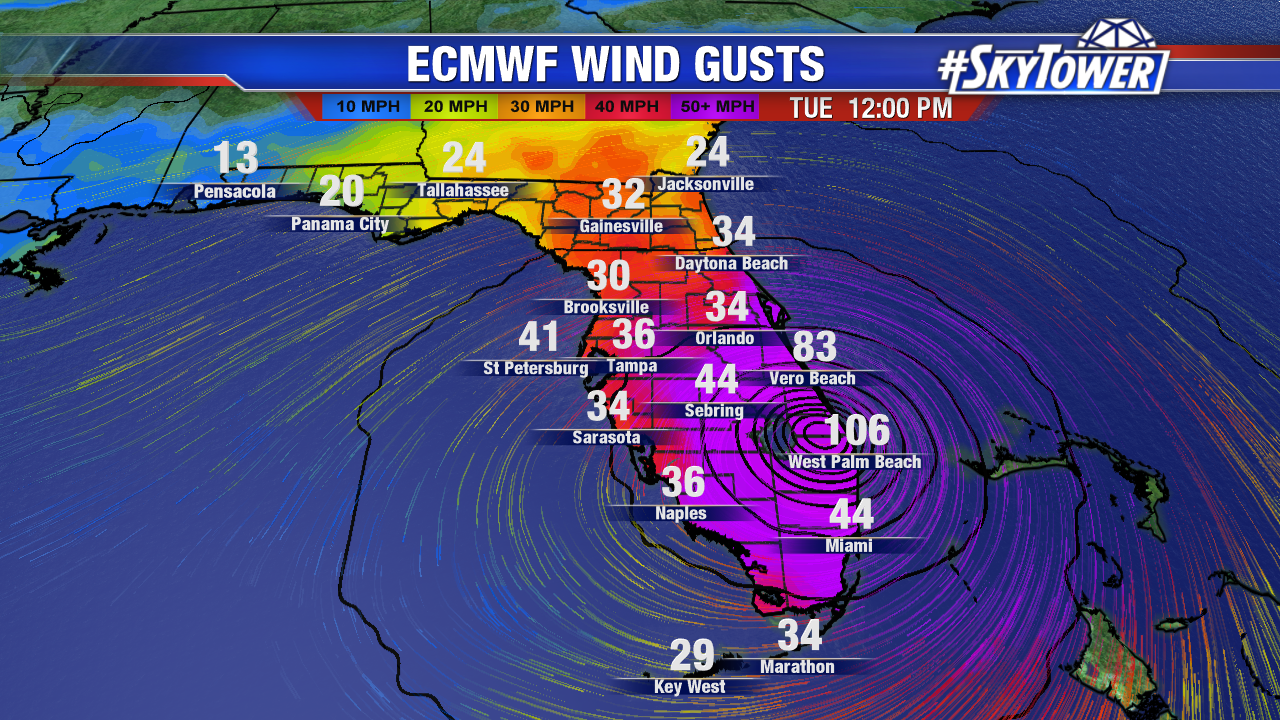Hurricane Dorian is kicking it up a notch this evening. Latest satellite imagery is that of a very healthy category 3 hurricane, which looks to be well on its way to becoming a category 4 later this evening or overnight.

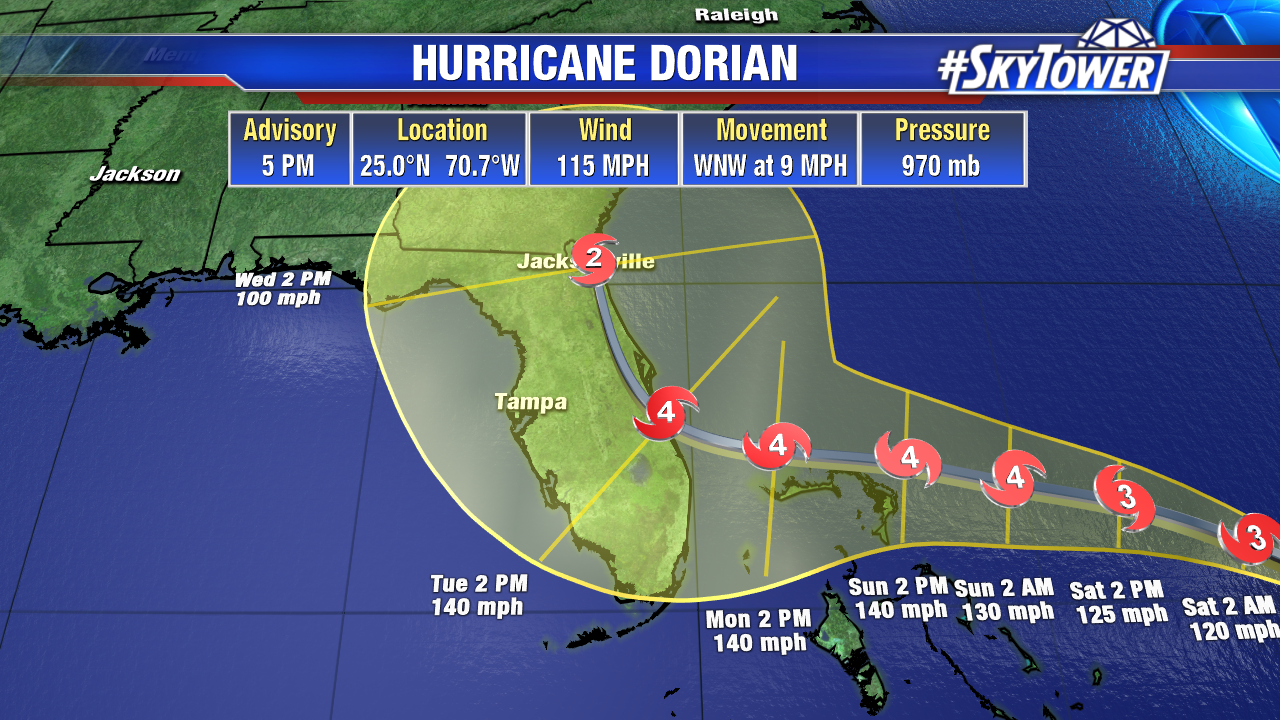
In the 5pm advisory, the National Hurricane Center nudged the track slightly to the east. This in response to afternoon model guidance, which suggested an even slower moving storm and an earlier turn to the north. The afternoon ECMWF model run in particular kept Dorian off of Florida’s East Coast altogether. The clustering of the majority of the ECMWF ensembles (51 versions of the same model) has noticeably shifted east as well.

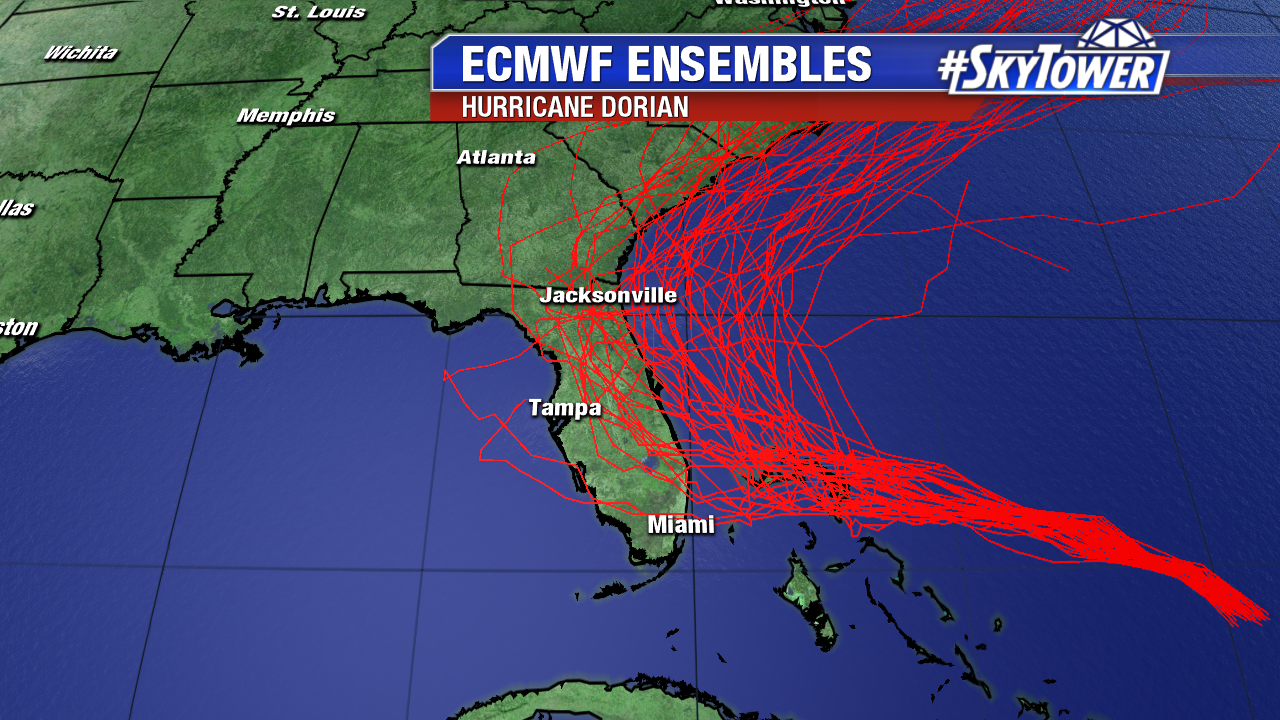
It’s one run of one model, but it’s a subtle trend that has become more apparent over the last day or two. By no means should we let our guard down, but it’s a promising sign that we’ll hope to continue in future model runs.
Model runs in the next 24 hours will be very telling. We’re optimistic at this point, but that optimism will only continue if we have more model consistency and consensus. Stay tuned, and stay prepared.
